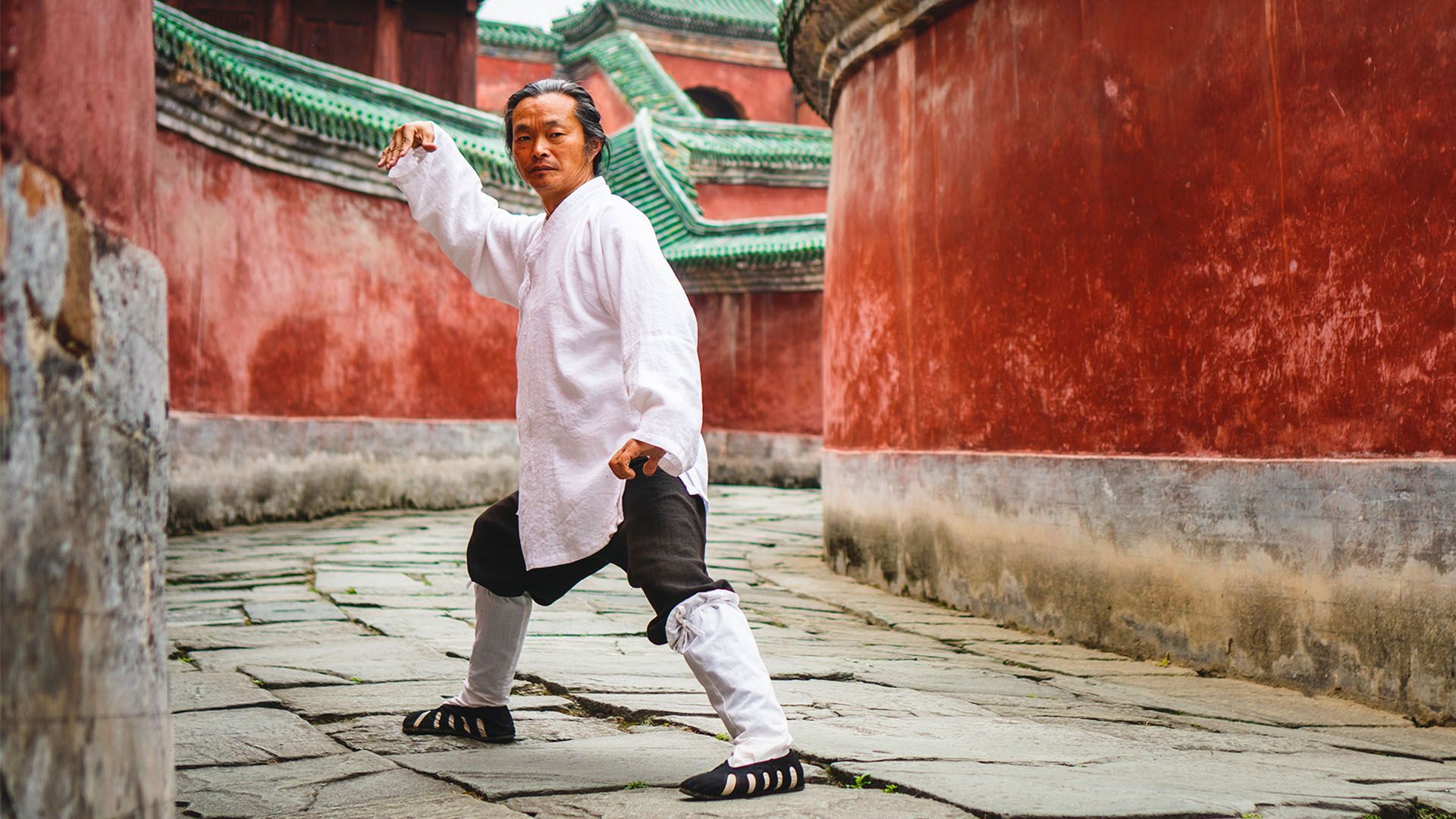Kung Fu vs Jiu Jitsu: 5 Key Differences
May 31, 2024
Choosing between Kung Fu and Jiu-Jitsu can be challenging for martial arts enthusiasts. Both arts offer unique techniques, philosophies, and benefits, making the decision difficult. Kung Fu focuses on striking and traditional forms, while Jiu-Jitsu excels in grappling and ground fighting. These differences significantly impact training, self-defense, and practical applications. Understanding these distinctions helps in selecting the most suitable martial art. This article provides a detailed comparison of Kung Fu vs Jiu Jitsu, highlighting five key differences. A complete guide to their unique aspects is given in this article.
Table of Contents
Origins of Kung Fu
Kung Fu, a traditional Chinese martial art, has ancient Chinese roots. Its techniques evolved over centuries, reflecting cultural practices and the philosophies of various dynasties. Emphasizing balance, flexibility, and power, Kung Fu incorporates striking, kicking, and defensive maneuvers to form a comprehensive fighting style.
Kung Fu's cultural and philosophical foundations are deeply embedded in Chinese history. The martial art not only promotes physical prowess but also mental discipline and spiritual growth. Principles from Taoism and Confucianism influence its practice, fostering harmony between mind and body for practitioners.
Development of Jiu-Jitsu
Jiu-Jitsu's development as a Japanese martial art traces back to the samurai warriors. Initially focusing on combat techniques for unarmed warriors against armed opponents, it emphasized leverage, throws, and joint locks. Jiu-Jitsu laid the groundwork for other martial arts like judo and Brazilian Jiu-Jitsu.
Brazilian Jiu-Jitsu (BJJ) evolved from traditional Jiu-Jitsu with a focus on ground fighting and submissions. The Gracie family played a pivotal role in its development, adapting techniques to emphasize leverage and control. BJJ's effectiveness in mixed martial arts (MMA) competitions boosted its global popularity.
Kung Fu vs Jiu Jitsu: Philosophy and Discipline

Kung Fu, a renowned Chinese martial art, emphasizes both physical prowess and mental strength. Rooted in ancient Chinese philosophy, it promotes the harmony of mind and body. Practitioners, through rigorous training, achieve mastery over various striking arts and traditional forms. Wing Chun and Tai Chi are popular styles within Kung Fu, each offering unique self-defense techniques. The discipline encourages a lifelong journey of self-improvement and respect for others. Kung Fu training, often devoid of a formal belt system, focuses on individual progress and continuous learning, making it an art for both self-defense and personal growth.

Jiu Jitsu, particularly Brazilian Jiu Jitsu (BJJ), centers around the principles of leverage and technique. Developed from Japanese Jiu-Jitsu, it emphasizes ground fighting and grappling arts. Practitioners learn to control opponents through submissions, chokes, and joint locks. The belt system in BJJ, ranging from white to black belt, marks a practitioner’s progress and skill level. Training includes sparring and live drills to enhance real-life application. The philosophy behind Jiu Jitsu advocates for adaptability and efficiency, teaching practitioners to remain calm and strategic in combat. This discipline fosters both physical and mental resilience through continuous practice.
Also Read: Jiu Jitsu vs Karate
Importance of Practicing Kung Fu and Jiu Jitsu
Physical Benefits:
- Practicing Kung Fu enhances flexibility, strength, and cardiovascular health.
- Training Jiu Jitsu builds muscle memory and improves endurance through rigorous drills.
- Regular sessions in both martial arts lead to better coordination and overall physical fitness.
- Techniques in Kung Fu include powerful leg strikes, which enhance lower body strength.
- Jiu Jitsu focuses on grappling and joint locks, helping to subdue a larger and stronger opponent.
Mental Discipline:
- Kung Fu instills patience and focus, essential for mastering complex forms and movements.
- Jiu Jitsu promotes problem-solving skills by teaching adaptability in various scenarios.
- Both martial arts emphasize discipline, perseverance, and respect for oneself and others.
- The practice of Qigong, a part of Kung Fu, aids in mental clarity and stress reduction.
- Training sessions in both arts foster a calm mind, which is crucial for handling real-life challenges.
Self-Defense Skills:
- Kung Fu and Jiu Jitsu equip practitioners with effective techniques to defend against assailants.
- Jiu Jitsu teaches control and submission, making it practical for self-defense scenarios.
- Kung Fu includes striking martial arts techniques that can be used to win a fight.
- Both arts train individuals to handle stronger opponents, ensuring safety in full-contact situations.
- Techniques from both styles work in real-life self-defense scenarios, providing practical protection skills.
5 Key Differences Between Kung Fu and Jiu Jitsu
|
Kung Fu
|
Jiu Jitsu
|
|---|---|
| Originated in ancient China with a rich cultural heritage and philosophy. | Developed in Japan, evolved through the influence of the Gracie family. |
| Emphasizes striking, including punches, kicks, and leg strikes. | Focuses on grappling, joint locks, and submissions to subdue opponents. |
| Training includes forms, drills, and sometimes qigong, without a formal belt system. | Training involves a structured belt system with ranks like blue belt and purple belt. |
| Effective in striking martial art scenarios, like breaking an opponent’s defense. | Excels in self-defense scenarios, especially against larger and stronger opponents. |
| Combines physical training with mental discipline, aiming for harmony. | Emphasizes leverage and technique to control stronger opponents, rooted in principles from Jigoro Kano. |
How These Martial Arts Help in Daily Life?
Martial arts such as Kung Fu, Brazilian Jiu-Jitsu, and Karate offer numerous daily life benefits. They enhance self-defense skills, boosting confidence in real-life scenarios. Regular training improves muscle memory, allowing quick responses to threats. Techniques like joint locks and leg strikes can subdue larger and stronger opponents. Practicing these arts promotes physical fitness, mental discipline, and stress relief. Additionally, martial arts foster respect and patience, which are essential in personal and professional relationships. Whether through grappling in Brazilian Jiu-Jitsu or striking in Kung Fu, these arts provide valuable skills for everyday challenges.
Conclusion
Kung Fu vs Jiu Jitsu highlights significant differences between these two martial arts. Kung Fu focuses on striking, incorporating various techniques and traditional forms. Jiu Jitsu, however, emphasizes grappling and submissions, ideal for subduing larger opponents. Both offer unique benefits, such as physical fitness, mental discipline, and effective self-defense strategies. Understanding these distinctions helps in choosing the right martial art for personal goals. Have you decided which martial art aligns with your self-defense and fitness objectives?
FAQs
1. Do Kung Fu and Jiu-Jitsu have similar philosophies?
No, Kung Fu emphasizes mental and physical harmony. Jiu-Jitsu focuses on leverage and technique.
2. Which martial art is more effective in street fights?
Both can be effective. Kung Fu offers striking techniques, while Jiu-Jitsu provides grappling control.
3. What are the key benefits of Kung Fu?
Kung Fu improves striking skills, mental discipline, and physical fitness.
4. How does Jiu-Jitsu handle larger opponents?
Jiu-Jitsu uses leverage and technique to control and subdue larger opponents.
5. Is it possible to train both Kung Fu and Jiu-Jitsu simultaneously?
Yes, training in both arts provides a well-rounded skill set for various situations.







